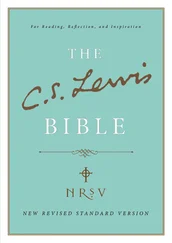Definition
Defined in the standard header utility, and in the nonstandard backward-compatibility header function.h.
Requirements on types
The requirement for operator!= is that x == y is a valid expression for objects x and y of type T .
The requirement for operator> is that y < x is a valid expression for objects x and y of type T .
The requirement for operator<= is that y < x is a valid expression for objects x and y of type T .
The requirement for operator>= is that x < y is a valid expression for objects x and y of type T .
Preconditions
The precondition for operator!= is that x and y are in the domain of operator== .
The precondition for operator> , operator<= , and operator>= is that x and y are in the domain of operator< .
Example
template
void relations(T x, T y) {
if (x == y) assert(!(x != y));
else assert(x != y);
if (x < y) {
assert(x <= y);
assert(y > x);
assert(y >= x);
} else if (y < x) {
assert(y <= x);
assert(x < y);
assert(x <= y);
} else {
assert(x <= y);
assert(x >= y);
}
}
See also
Equality Comparable, LessThan Comparable
Category: utilities
Component type: type
Description
Pair is a heterogeneous pair: it holds one object of type T1 and one of type T2 . A pair is much like a Container, in that it "owns" its elements. It is not actually a model of Container, though, because it does not support the standard methods (such as iterators) for accessing the elements of a Container.
Functions that need to return two values often return a pair .
Example
pair result = do_a_calculation();
if (result.first) do_something_more(result.second);
else report_error();
Definition
Defined in the standard header utility, and in the nonstandard backward-compatibility header pair.h.
Template parameters
| Parameter |
Description |
T1 |
The type of the first element stored in the pair |
T2 |
The type of the second element stored in the pair |
Model of
Assignable
Type requirements
T1 and T2 must both be models of Assignable. Additional operations have additional requirements. Pair 's default constructor may only be used if both T1 and T2 are DefaultConstructible, operator== may only be used if both T1 and T2 are EqualityComparable, and operator< may only be used if both T1 and T2 are LessThanComparable.
Public base classes
None.
Members
| Member |
Where defined |
Description |
first_type |
pair |
See below. |
second |
type pair |
See below. |
pair() |
pair |
The default constructor. See below. |
pair(const first_type&, const second_type&) |
pair |
The pair constructor. See below. |
pair(const pair&) |
Assignable |
The copy constructor |
pair& operator=(const pair&) |
Assignable |
The assignment operator |
first |
pair |
See below. |
second |
pair |
See below. |
bool operator==(const pair&, const pair&) |
pair |
See below. |
bool operator<(const pair&, const pair&) |
pair |
See below. |
template pair make_pair(const T1&, const T2&) |
pair |
See below. |
New members
These members are not defined in the Assignable requirements, but are specific to pair .
| Member |
Description |
first_type |
The type of the pair's first component. This is a typedef for the template parameter T1 |
| second_type |
The type of the pair's second component. This is a typedef for the template parameter T2 |
pair() |
The default constructor. It uses constructs objects of types T1 and T2 using their default constructors. This constructor may only be used if both T1 and T2 are DefaultConstructible. |
pair(const first_type& x, const second_type& y) |
The pair constructor. Constructs a pair such that first is constructed from x and second is constructed from y . |
first |
Public member variable of type first_type : the first object stored in the pair . |
second |
Public member variable of type second_type : The second object stored in the pair . |
template bool operator==(const pair& x, const pair& y); |
The equality operator. The return value is true if and only the first elements of x and y are equal, and the second elements of x and y are equal. This operator may only be used if both T1 and T2 are EqualityComparable . This is a global function, not a member function. |
template bool operator<(const pair& x, const pair& y); |
The comparison operator. It uses lexicographic comparison: the return value is true if the first element of x is less than the first element of y , and false if the first element of y is less than the first element of x . If neither of these is the case, then operator< returns the result of comparing the second elements of x and y . This operator may only be used if both T1 and T2 are LessThanComparable . This is a global function, not a member function. |
template pair make_pair(const T1& x, const T2& x) |
Equivalent to pair(x, y) . This is a global function, not a member function. It exists only for the sake of convenience. |
See also
Assignable, Default Constructible, LessThan Comparable
Читать дальше











